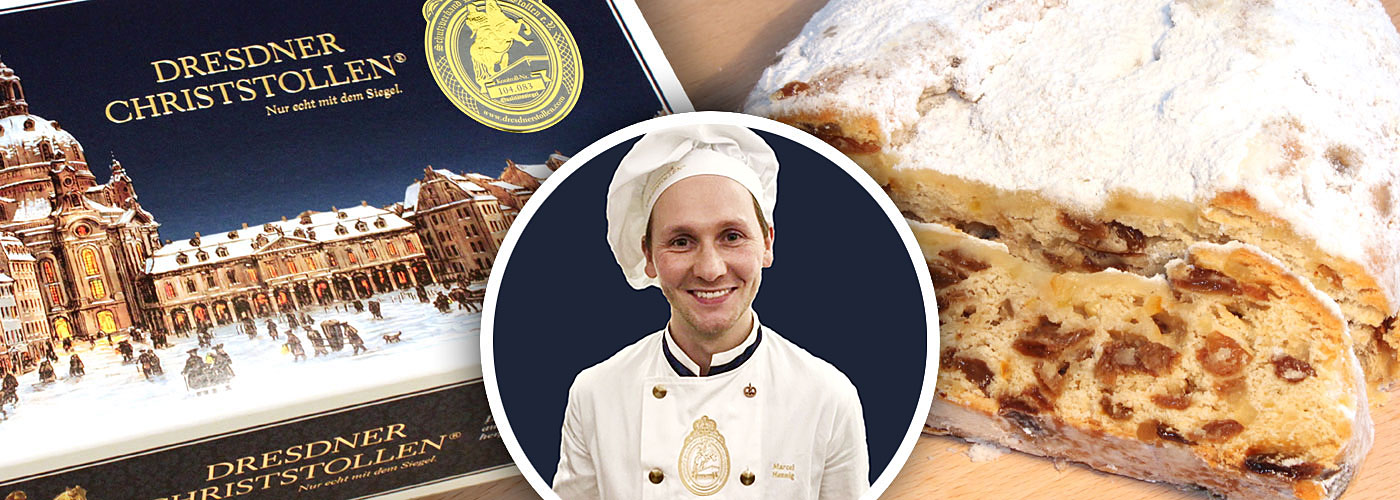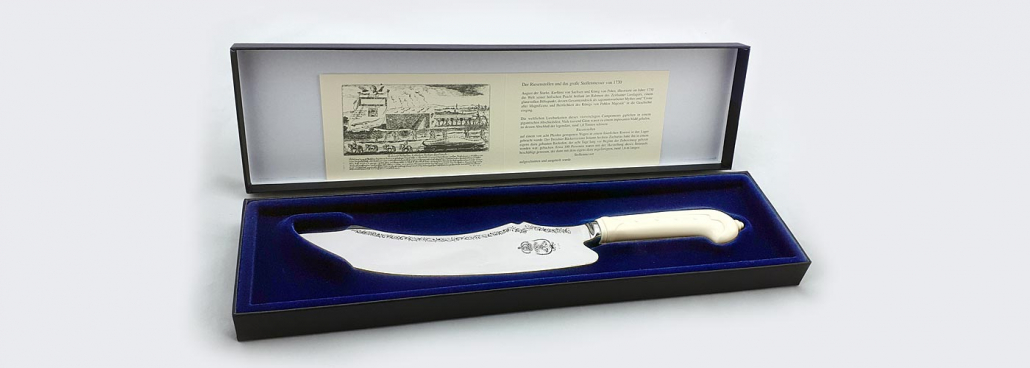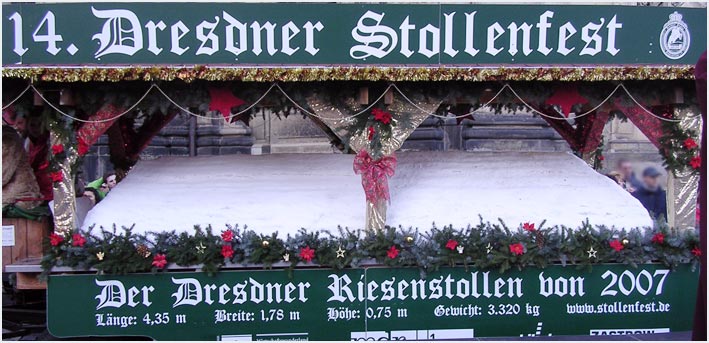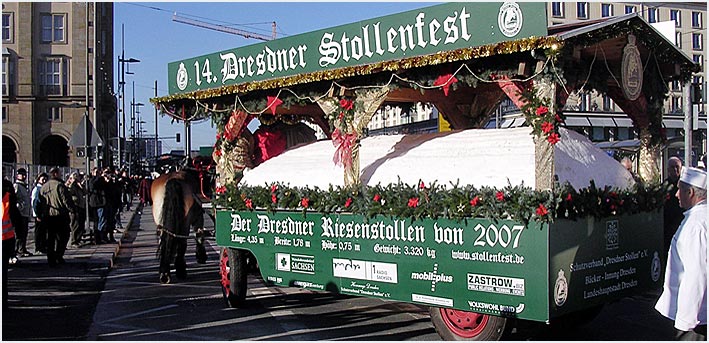
The history of the Dresden Christstollen®.
The tradition of baking Christmas stollen in Dresden is already very, very old. The path of this noble Christmas cake can be traced back to around the year 1400. For the first time the Stollen is mentioned in 1474 on the invoice of the Christian Bartholomäus Hospital to the Dresden court as a fasting pastry. In Middle High German, “Strutzel” or “Striezel” referred to a yeast pastry in an elongated, sometimes braided form. It was probably intended as a reminder of the swaddled child in the Christian Christmas story. In some Saxon towns, this “Christbrot” was also called “Stollen” or “Stolle” because of its bead-like body. The stollen was subject to church dogma, which, among other things, forbade the use of butter and milk for baking. Thus, the pastry consisted only of flour, yeast and water, and the taste was accordingly.
Therefore, in 1470, Elector Ernst of Saxony and his brother Albrecht approached Pope Innocent VIII with a request to lift the ban on butter. The Holy Father wrote the so-called “Butter Letter”, which allowed to use also butter, milk and fine ingredients such as raisins, almonds and fruits for stollen upon payment of a penance. Around 1500, Christmas breads were already sold at the Striezelmarkt in Dresden. From 1560, the stollen bakers presented their sovereign with one or two Christmas stollen weighing 36 pounds for the holy feast. Eight masters and eight journeymen carried him to the castle. This custom continued for a long time. Over time, the baking ingredients were refined and the recipe was passed down from generation to generation. Even today, bakers and home bakers preserve their recipe. Since 1617, the Stollen has been an integral part of the Christmas celebration.

The giant stollen of the Zeithainer Lustlager and the Dresden Stollen Knife
But in 1730, August (II) the Strong, Elector of Saxony and King of Poland, exceeded all previous gallery weights with his order. On the occasion of the Zeithainer Lustlager he had the bakers’ guild of Dresden bake a giant stollen. The Dresden master baker Zacharias presented a giant stollen weighing almost 1.8 tons as the highlight of the secular revelry. This had been prepared by 100 master bakers and baker’s assistants in a week’s work. It was baked in an oven specially built by the court master builder Pöppelmann.
In a solemn convoy, the stud was pulled to the king’s table by eight horses. The Stollen knife, with which the giant Stollen was cut, was about 1.60 m long and was designed and made especially for this celebration. Traditionally, today a replica of the original is used for gating. This event is linked to the annual Stollen Festival held in Dresden on the eve of the 2nd Advent. Since the nineties, the Stollen Festival has been part of the program of the Dresden Striezelmarkt and is immediately its highlight.


The Dresden Stollen Festival and the Stollen Girl
For this, members of the Schutzverband Dresdner Stollen e.V. bake a giant stollen weighing about 3,000 kg on the Saturday before the second Advent. After a procession through the Old Town, a master baker then cuts the “giant stollen” with the 1.60 m long and 12 kg heavy stollen knife, assisted by the Dresden Stollen Girl with much charm and expertise. It is up to the mayor to taste the first piece and then release the stollen for sale. In many thousands of portions
cut, the traditional pastry is sold for a good cause. The honorary title of Stollen Girl is awarded annually in November to a trainee in the third year of her apprenticeship as a prospective baker, confectioner or specialized saleswoman by the Schutzverband Dresdner Stollen e.V. (Dresden Stollen Association). The Stollen Girl gives the starting signal for the baking of the giant Stollen, opens the Stollen Festival and is a charming representative of the Dresden Stollen at festivals and tourist events.

The Schutzverband Dresdner Stollen e.V. and the Stollen Seal
The Schutzverband Dresdner Stollen e.V. was founded in 1991. It guarantees the consumer the tested, consistent and high quality of the delicious Dresden Stollen by means of a quality certificate, an oval seal with company-specific labeling and the text Dresdner Stollen Schutzverband e.V.. The protection association represents the interests of around 150 bakeries and confectioners from the greater Dresden area and protects the Dresden Stollen as a brand product and geographical designation of origin. The buyer can clearly recognize the origin and quality of the traditional Christmas cookies by the quality seal and the control number on it. Dresdner Stollen® is a registered collective trademark of Schutzverband Dresdner Stollen e.V.
Since 2010, Dresdner Stollen® has also been protected throughout the EU by a special quality mark. Since then, it can boast the PGI (Protected Geographical Indication) seal. As early as the first half of the last century, the Stollen, soldered into tin-plated tin boxes, was shipped all over the world. However, the Dresden Christstollen® has only been baked in its current quality since this century and has achieved worldwide fame. Only high-quality, noble raw materials, exquisite ingredients, natural flavorings and exotic spices are processed. Even if there is a basic recipe, every stollen baker has his inherited family secret. Connoisseurs have been ordering from traditional Dresden bakeries and confectioners for years.
This post is also available in: German




